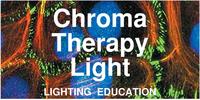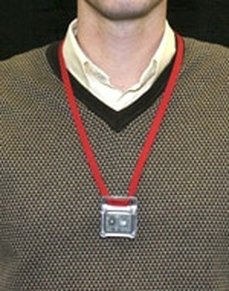Lighting for Healthy Buildings - Learning Objectives
Defining Healthy Lighting
Green Building, Healthy Buildings, LEED Buildings, Well Buildings - are all used to describe various types and certifications for buildings that are designed to provide healthful environments inside and out.
A healthy building is designed to do no harm to the occupants nor the environment. The bewildering array of light sources and lighting fixture choices is confusing. Understanding how colors appear under different light sources, CRI, CCT, and other metrics for color rendering, energy efficiency, hours of operation, and controlling glare are all important lighting challenges. [1] When current scientific research indicates a potential for health imbalance with an excess of blue light wavelengths before bedtime or glare so intense that it causes visual dis-ability, we are led to look for lighting equipment choices that 'do no harm.' Rensselaer Lighting Research Center & Lighting Patterns for Healthy Buildings
The Rensselaer Lighting Research Center (LRC) is a hub for lighting research. Lighting Patterns for Healthy Buildings assists lighting designers and specifiers in selecting quality lighting that supports healthy living. Designed in the spirit of traditional architectural pattern books, it presents model designs for typical rooms that can be adapted to specific buildings and styles. It is dedicated to all those who strive to create practical facilities that harmonize with the occupants’ needs and our environment.
Lighting affects peoples’ visual, circadian, and perceptual systems. A 24-hour lighting scheme, first proposed by Mariana Figueiro in 2008 for older adults, augments lighting design by including high circadian stimulation during the daytime, low circadian stimulation in the evening, good lighting for visibility, and nightlights with horizontal and vertical cues to improve postural stability. Applying the results of circadian stimulus (CS) research, Lighting Patterns for Healthy Buildings presents a portfolio of lighting patterns for various building types. http://lightingpatternsforhealthybuildings.org/ Light and Health Alliances
The Light and Health Alliance is a collaboration among Members (manufacturers, government organizations and NGOs, codes and standards bodies) and practitioners, including architects, specifiers, medical facility managers and physicians, to enable the broad adoption of lighting for human health by producing factual information based on basic and applied research and by visualizing future applications.
http://www.lrc.rpi.edu/programs/lightHealth/alliance.asp Daysimeter
The Daysimeter A unique tool developed by the LRC for measuring personal circadian light exposure and daily rest and activity levels, the Daysimeter (and its smaller counterpart, the Daysimeter-D) has been successfully used to determine light's impact on the circadian system in a number of studies.
http://www.lrc.rpi.edu/programs/lightHealth/LightandDaysimeter.asp |
International Well Building Institute
The way that buildings are designed, constructed and maintained impacts the way we sleep, what we eat, and how we feel. The WELL Building StandardTM uses innovative, research-backed strategies to advance health, happiness, mindfulness and productivity in our buildings and communities.
https://standard.wellcertified.com/light & https://www.wellcertified.com/your-community Better Buildings - U.S. Dept. of Energy
Better Buildings is an initiative of the U.S. Department of Energy (DOE) designed to improve the lives of the American people by driving leadership in energy innovation.
Through Better Buildings, DOE partners with leaders in the public and private sectors to make the nation’s homes, commercial buildings and industrial plants more energy efficient by accelerating investment and sharing of successful best practices. https://betterbuildingssolutioncenter.energy.gov/ LEED - U.S. Green Building Council
LEED ZERO Carbon
LEED, or Leadership in Energy and Environmental Design, is changing the way we think about how buildings and communities are planned, constructed, maintained and operated. Leaders around the world have made LEED the most widely used third-party verification for green buildings, with around 1.85 million square feet being certified daily.
LEED works for all buildings—from homes to corporate headquarters—at all phases of development. Projects pursuing LEED certification earn points across several areas that address sustainability issues. Based on the number of points achieved, a project then receives one of four LEED rating levels: Certified, Silver, Gold and Platinum. LEED-certified buildings are resource efficient. They use less water and energy and reduce greenhouse gas emissions. As an added bonus, they save money. Learn more about why LEED continues to be the leading benchmark in green building. http://www.usgbc.org/leed BREEAMBREEAM works with a number of organizations establishing different types of partnerships that promote sustainability internationally and at a local level.
The BREEAM assessment process evaluates the procurement, design, construction and operation of a development against targets that are based on performance benchmarks. Assessments are carried out by independent, licensed assessors, and developments rated and certified on a scale of Pass, Good, Very Good, Excellent and Outstanding. http://www.breeam.com/ & http://www.breeam.com/awards Healthy Building Network
Figuring out what is in building materials – down to the nano-level ingredients – is what our research team does. We perform independent, foundational research and product evaluations required to provide building products specifiers with unbiased, up-to-date information about chemical hazards, practical product evaluations and comparisons, and recommendations about the healthfulness of widely-used building products. This research provides the insights found in Healthy Building News, supports the growth of the Pharos Building Product Library, and helps building owners make critical materials decisions through the Healthy Building Roundtables.
https://healthybuilding.net/content/our-work Footnotes
Photo Credits
|
- Home
-
- CHROMA Topics
- Color Spectrum - Light is Energy
- Color in Light
- Color in Nature
- Color in Paint
- Why does paint fade?
- Color Names & Meanings
- Color Phenomena
- Color Perception is Individual
- Color In Fashion
- Color for your home
- Color in Space
- Color Blindness
- Color Blind Interview
- Synesthesia
- Synesthete Deborah Borrowdale-Cox
- Synesthete Stephen Orr, BH&G Editor
-
- Circadian & THERAPY Topics
- Circadian Explained
- Circadian Ganglion Cells
- Circadian Melatonin
- Circadian Animals
- Circadian Research
- Autism & Lighting for the Spectrum
- Blue Light Dimming Apps
- Red Night Lights
- Vitamin D & Light
- SAD - Seasonal Affective Disorder
- Alzheimers and Light Therapy
- Photosensitivity - Light Sensitive Drugs
- Red Light Therapy
- Sleep & Lighting
- Dreams and Second Sleep
- NASA - Lighting in Space & Undersea
- Jet Lag
- Sunglasses
- Chakras
- Crystals, Minerals, & Gemstones
-
- LIGHTing Design Topics
- UV Germicidal Disinfection Light
- LED Lighting Facts Card
- CRI - Color Rendering Index
- LED TM-30
- LED Kelvin Color
- LED LPW
- LED Flicker
- LED Glare
- OLED - Organic LED
- Human Centric Lighting
- Lighting with Daylighting
- Lighting for Healthy Buildings & Zero Net Energy
- Lighting for Healthcare
- Lighting for Horticulture
- Lighting for Hospitality & LED Retrofits
- Lighting for Museums
- Lighting for Seniors & Low Vision
- Lighting Design Tips & Codes
- Parking Lot Lighting
- Solar Lighting for Humanity & World Health
- Davis Insectary Garden
- Santa Barbara Mesa Insectary Garden
- Home
-
- CHROMA Topics
- Color Spectrum - Light is Energy
- Color in Light
- Color in Nature
- Color in Paint
- Why does paint fade?
- Color Names & Meanings
- Color Phenomena
- Color Perception is Individual
- Color In Fashion
- Color for your home
- Color in Space
- Color Blindness
- Color Blind Interview
- Synesthesia
- Synesthete Deborah Borrowdale-Cox
- Synesthete Stephen Orr, BH&G Editor
-
- Circadian & THERAPY Topics
- Circadian Explained
- Circadian Ganglion Cells
- Circadian Melatonin
- Circadian Animals
- Circadian Research
- Autism & Lighting for the Spectrum
- Blue Light Dimming Apps
- Red Night Lights
- Vitamin D & Light
- SAD - Seasonal Affective Disorder
- Alzheimers and Light Therapy
- Photosensitivity - Light Sensitive Drugs
- Red Light Therapy
- Sleep & Lighting
- Dreams and Second Sleep
- NASA - Lighting in Space & Undersea
- Jet Lag
- Sunglasses
- Chakras
- Crystals, Minerals, & Gemstones
-
- LIGHTing Design Topics
- UV Germicidal Disinfection Light
- LED Lighting Facts Card
- CRI - Color Rendering Index
- LED TM-30
- LED Kelvin Color
- LED LPW
- LED Flicker
- LED Glare
- OLED - Organic LED
- Human Centric Lighting
- Lighting with Daylighting
- Lighting for Healthy Buildings & Zero Net Energy
- Lighting for Healthcare
- Lighting for Horticulture
- Lighting for Hospitality & LED Retrofits
- Lighting for Museums
- Lighting for Seniors & Low Vision
- Lighting Design Tips & Codes
- Parking Lot Lighting
- Solar Lighting for Humanity & World Health
- Davis Insectary Garden
- Santa Barbara Mesa Insectary Garden






